Curatorial Statement
This exhibition is aimed at showing how female artists depict war, its catastrophic effects, and its futility. It is the main theme that the chosen painters explore. While selecting the images, I focused on the artists who represented different countries and historical periods. Overall, the chosen paintings may differ in terms of style or technique; nevertheless, in each case, they highlight the idea that women involuntarily and inevitably have to face horrendous consequences of wars, even though they never initiate them.
The artworks that will be exhibited are oil and watercolor paintings. Furthermore, there is one etching. They represent different styles such as impressionism and romanticism. The chosen art works have attracted much critical attention. For instance, one can speak about the paintings by Käthe Kollwitz (Glueck par. 1). Additionally, these pictures can be of great interest to people who study the history of military conflicts. This argument is particularly relevant if one speaks about the works of Anna Airy (“War art: Shop for machining 15-inch shells (1918).” par.1). Overall, modern art critics want learn more about the perception of war through the eyes of female artists (“Women at war: The female British artists who were written out of history.” par. 1).
While looking for paintings that can be included in this exhibition, I first focused on the depiction of military conflicts in various artworks. I searched for the paintings that were created in the nineteenth and twentieth centuries. These periods were chosen because in this way it could be easier to find relevant artworks. Overall, this approach enabled me to find some excellent examples. In my view, the message conveyed by these painters continues to be relevant to the audience because peace in the modern world is extremely fragile, and one should be able to value it.
Collection of art works
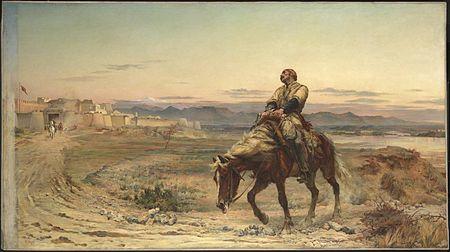
This oil painting depicts the only soldier who survived the retreat of the British Army from Kabul. This picture has been included because it highlights the hardships to which a person can be exposed during military conflicts. One can clearly see that he is completely emaciated. Overall, Elizabeth Thompson skillfully portrays the suffering of this individual.
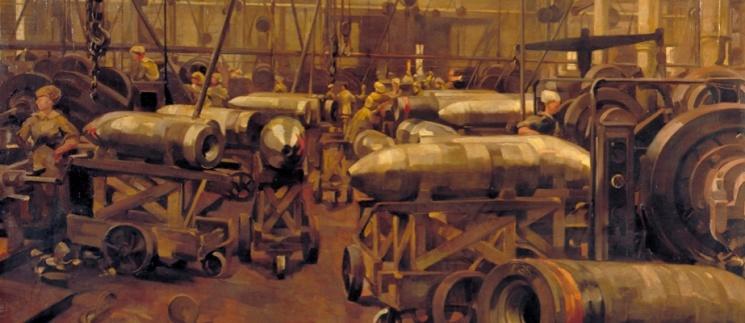
In this painting, Anna Airy masterfully depicts the creation of weaponry that can kill thousands of people. Moreover, the author shows that woman can be forced to take part in war, even though they do nothing to provoke military conflicts.
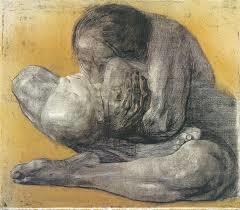
This etching painted by Käthe Kollwitz is very touching because it highlights suffering of a woman who was deprived of her son. This painting has been singled out among others because it illustrates the idea that war can be caused by irresponsibility of political leaders; in turn, this irresponsibility ruins the lives of many innocent people.
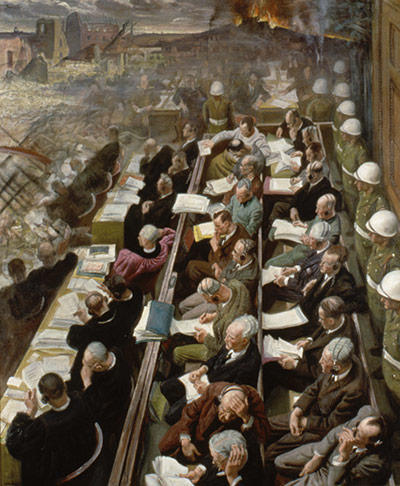
This picture, created by Laura Knight depicts the key officials of the Third Reich. However, at the same time, she describes the atrocious results of their actions. This juxtaposition can produce an indelible impression on the viewers. This is why it has been selected for this exhibition.
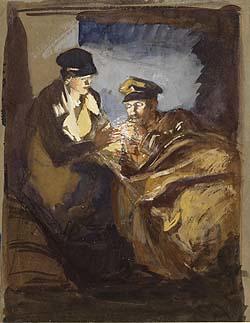
This watercolor painting depicts the attempts of women to alleviate the suffering of soldiers. This artwork has been included because the painter creates a very elaborate palette that highlights the emaciation of the wounded person. This argument is particularly relevant if one speaks about different shades of yellow.
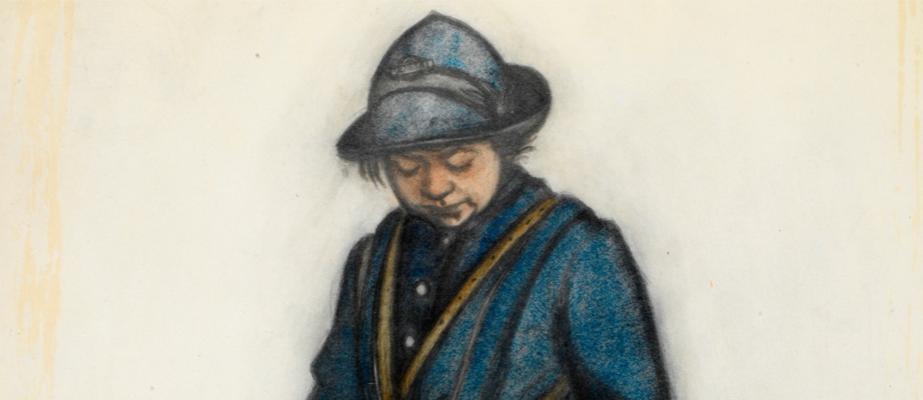
This painting represents the roles that women had to assume during World War I. This work can be singled out because it shows how the image of women can be transformed by war.
Works Cited
Glueck, Grace. “Art in Review: Käthe Kollwitz.” The New York Times. 2002. Web.
“War art: Shop for machining 15-inch shells (1918).” The Telegraph. 2013. Web.
“Women at war: The female British artists who were written out of history.” The Telegraph. 2011. Web.